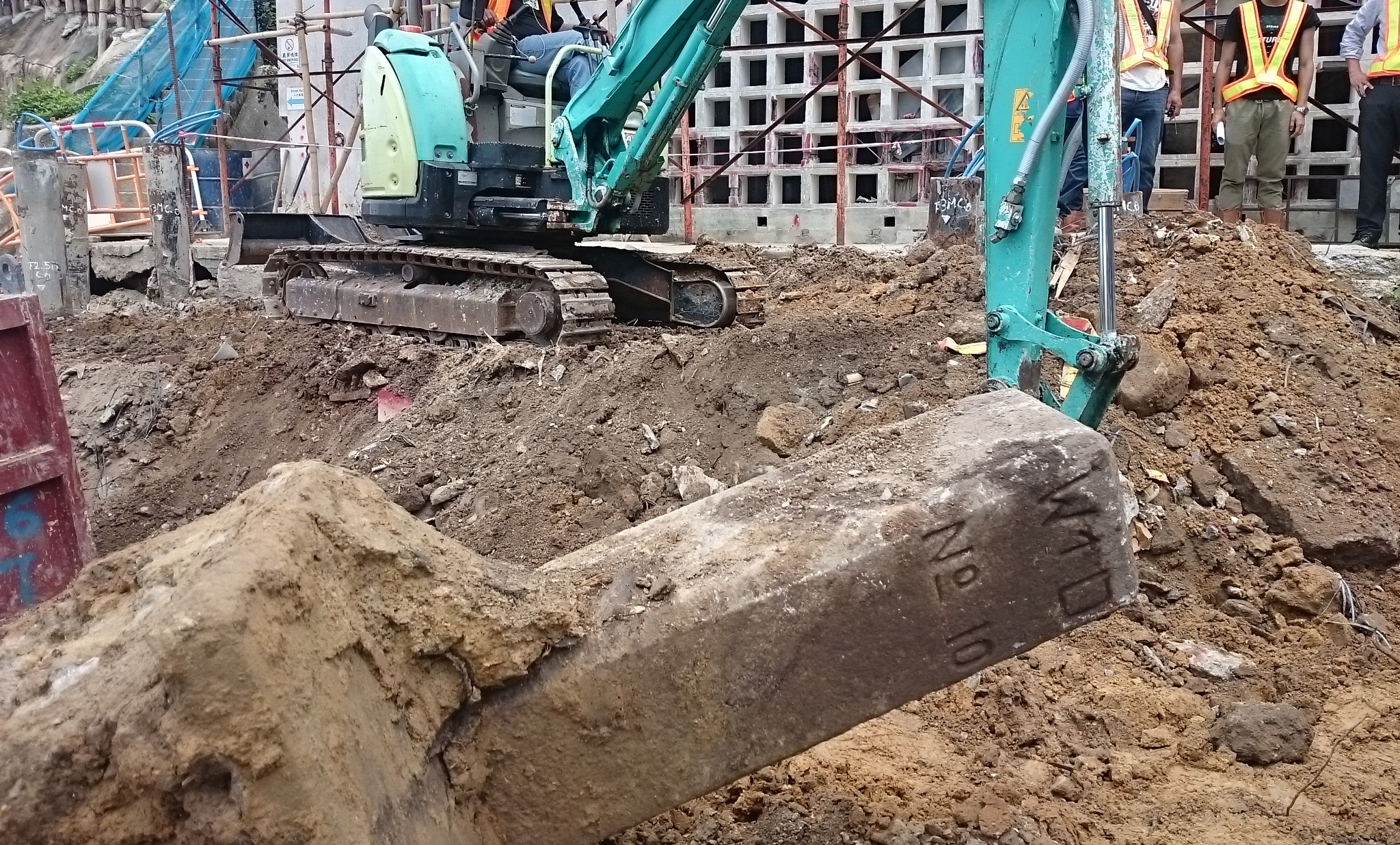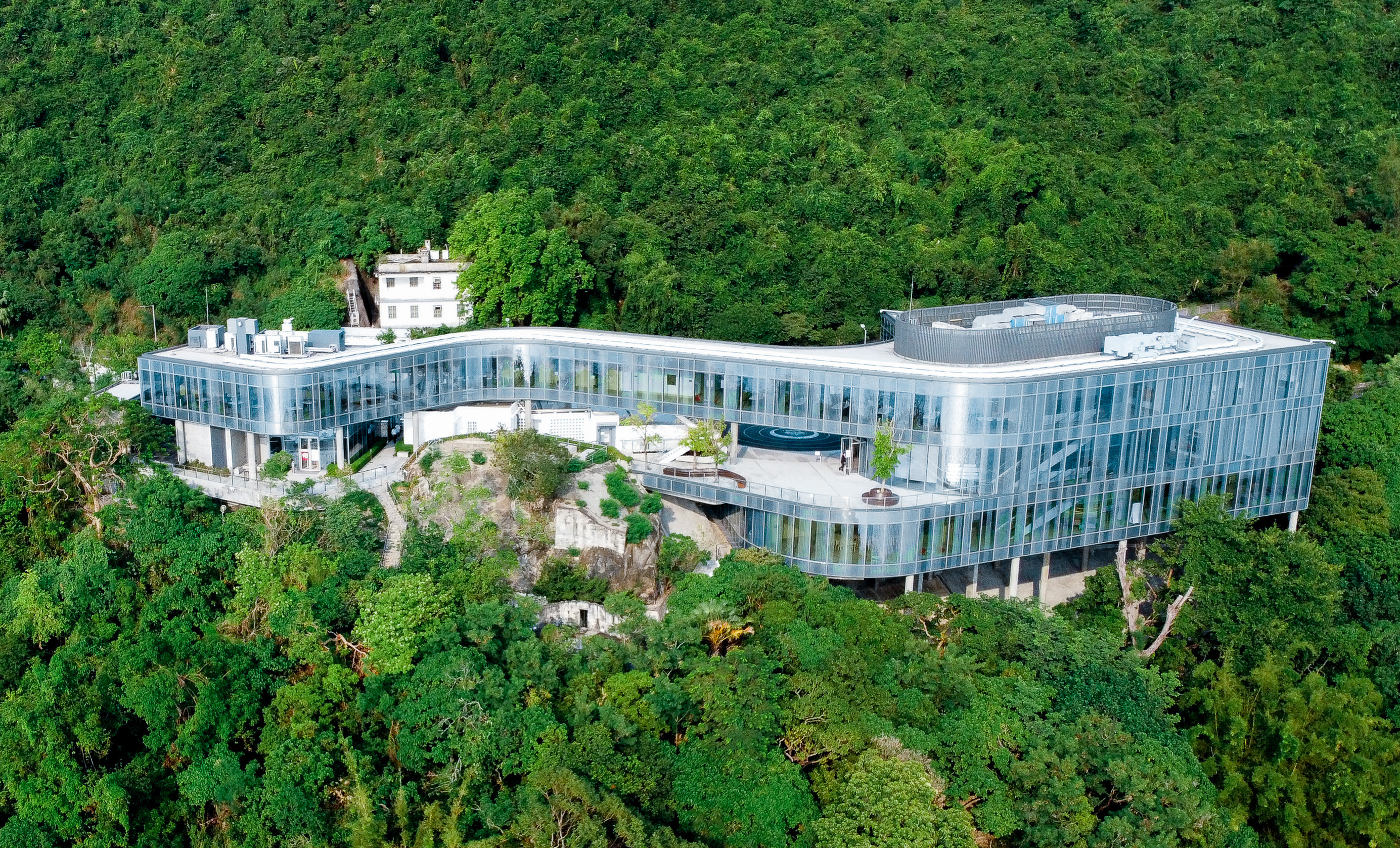Education: The University
2013 – Present
After the Royal Hong Kong Police Force stopped using the Victoria Road Detention Centre, the site had no permanent tenant for over a decade. It was occasionally used as a movie set – including Wong Kar-wai’s 2046 (2004) and Ang Lee’s Lust, Caution (2007) – but there was no day-to-day activity here and the unoccupied site sat dormant for several years.
The University of Chicago Booth School of Business has been offering an Executive Master of Business Administration (EMBA) program in Asia since 2000. During 2011-2012, Chicago Booth started the strategic planning process to move the Asia EMBA Program from Singapore to a new location. In February 2013, under the land grant scheme, the Hong Kong Government invited applications from non-profit education institutions to operate full-time locally-accredited degree programmes at the site. This Scheme was introduced in 2002 by the Government to support the development of self-financing post-secondary sector, by granting land sites and vacant government premises to qualifying institutions at nominal premium and leased at nominal rent.
The University of Chicago Foundation in Hong Kong Limited was one of the institutions that submitted an application comprised of a Site Development Proposal and an Educational Development Proposal, outlining their plans to revitalise this site and was earmarked as the prospective operator of the site in June 2013, thereby prompting the University of Chicago and Chicago Booth’s decision to move to Hong Kong. This decision was intended to allow the University and Chicago Booth to draw the most diverse set of students from the region and also to be closer to the growing Chinese economy. At the same time, the larger University was deepening its engagement in Asia and expanding its many activities in the region; the University opened a Center in Beijing in 2010, and was planning another one in New Delhi (opened in 2014). It was apparent that Hong Kong would be the perfect location for programmes across the entire spectrum of the arts, sciences, and public affairs. Hong Kong’s openness, and the network of educational institutions already present here, made it an ideal site for collaborations with people from both East and Southeast Asia, and for Chicago students and faculty to find valuable learning and teaching experiences.
In the autumn of 2013, Bing Thom, a renowned architect born in Hong Kong and based in Vancouver, was selected through an international architectural selection process to design the campus. The design concept was born from a thoughtful response to the challenging hillside site through a problem-solving process to overcome a variety of site and topographical constraints. His solution was to touch the earth lightly by floating the new building above the natural vegetation, and to seamlessly integrate with the existing heritage buildings through careful adaptive reuse and conservation. Bing Thom completed the plans, but died unexpectedly in 2016, making this one of his last two significant projects, both located in Hong Kong. After Bing’s death, the name of the firm changed from Bing Thom Architects to Revery Architecture in 2017. Meanwhile, the University opened an interim location in Cyberport and began offering various educational programmes there in 2014. The land grant for the Mount Davis site was executed in May 2016, the revitalisation project commenced in June of the same year, and doors opened for classes in August 2018. The University’s official dedication of the site was held in November 2018.
This site joins the University’s Centers in New Delhi, Beijing, Paris, and The University of Chicago Booth School of Business in London, in bringing together researchers and students from a wide array of institutions for interdisciplinary research and collaboration. It is an important addition to the University’s international presence, which extends to hundreds of programs and initiatives in more than 40 countries on all seven continents.
In addition to The Hong Kong Jockey Club University of Chicago Academic Complex | The University of Chicago Francis and Rose Yuen Campus, the site includes The Hong Kong Jockey Club University of Chicago Heritage Campus. Together with the support of alumni, parents and friends, led by University Trustee Francis Tin Fan Yuen and his wife, Rose Wai Mun Lee Yuen, the site is a testament to the University’s commitment to research, education, entrepreneurship and heritage programs. Through revitalisation, the University aims to provide new opportunities for public education and enjoyment of this important heritage site.
The conservation and revitalisation of the heritage buildings on the site was made possible by a HK$98 million grant from The Hong Kong Jockey Club Charities Trust to use towards the Heritage Preservation Project, which converted the Grade 3 historic buildings (rated by the Antiquities Advisory Board) into The Hong Kong Jockey Club University of Chicago Heritage Courtyard and Interpretation Centre as well as classrooms and a variety of student spaces. It also integrated the revitalised heritage buildings with the modern architecture of the new Academic Complex. In addition to The Hong Kong Jockey Club University of Chicago Heritage Courtyard and Interpretation Centre, the heritage elements of the site include the guardhouse, green entry gate from Victoria Road, the disused battery gun emplacement and ancillary structures, as well as other exterior elements. Linked to the existing public trail system, the site is easily accessible to visitors.
The architectural design pays homage to the site’s history and former occupants by creating this interpretation centre, and by preserving and highlighting significant architectural elements throughout the site. But in other respects, the site’s latest re-invention breaks with its past. The design combines modern functionality with preservation of and respect for the site’s history, featuring adaptive reuse of the existing heritage buildings on the site.
The “Treehouse of Knowledge,” now an embodiment of Bing Thom’s design vision, highlights the site’s new purpose. And with that purpose comes a different relationship between this site and the world beyond. In the eras of the Jubilee Battery, the Nationalist matsheds, and the Victoria Road Detention Centre, the use of this site reflected the tensions of a divided world; its current re-use reflects hopes for a less divided future. The site’s earlier uses also entailed very limited relations with the surrounding community – which at times, as during squatter occupations, reciprocated the desire to maintain a separation between this site and its neighbours. The University, on the contrary, looks forward to close relations with nearby communities and with Hong Kong as a whole; rooted in Hong Kong’s heritage, and our own, we look forward to a productive future here.







